Improve your health and well-being
| 19 Jan 2018 | 01:07
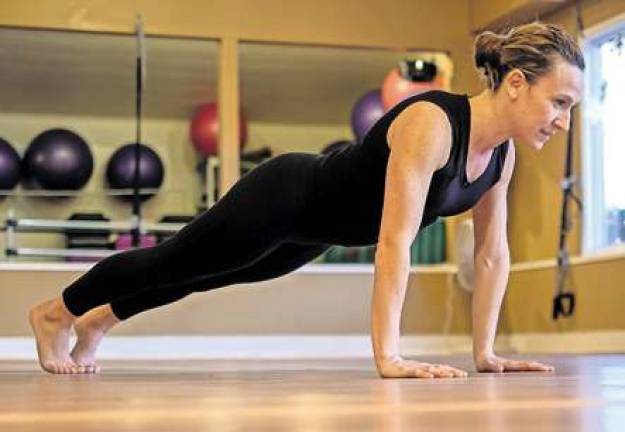
You have your workout routine, or maybe you don't. If the latter is the case, now is a good time to start one.
We asked five fitness professionals, “If you add just one exercise to your weekly routine this year, what should it be?”
The trainers and physical therapy professionals who participated in our survey had varied answers, although planks were suggested by more than one trainer. But their point was clear – get moving and build strength. A healthy exercise program will obviously help your physical fitness but it can also help with the emotional side of things, including depression and anxiety.
Of course, before you begin any physical activity, be sure to check with your health professional.
Anne Kane, West Milford Physical Therapy
Sit to Stand to Sit
"If I were to choose one single exercise that would benefit an entire community it would be the 'Sit to Stand to Sit.' When completed with focus on correct technique and for multiple repetitions daily, Sit to Stand to Sit can have significant benefits. Increased emphasis on correct posture including spinal alignment and core activation is needed. Completing the motion with no or just minimal assistance of the arms increases strength of hip and knee muscles.
“Studies from the Centers for Disease Control and Prevention have identified that the speed with which the action is completed in a 30 second time period is an indicator of overall health and risk of falls. For instance, at age 60 to 64, expected repetitions are 12 to 14 in 30 seconds, age 70 to 74 expect 10 to 12 and at 80 to 84 expect 9 to 10 repetitions to be in the normal range.
“Activities that fit into our daily routines can be a great way to promote good posture, strength and endurance. If your day is spent in the sitting position, this one single exercise can be repeated with progressive repetitions to improve your health.”
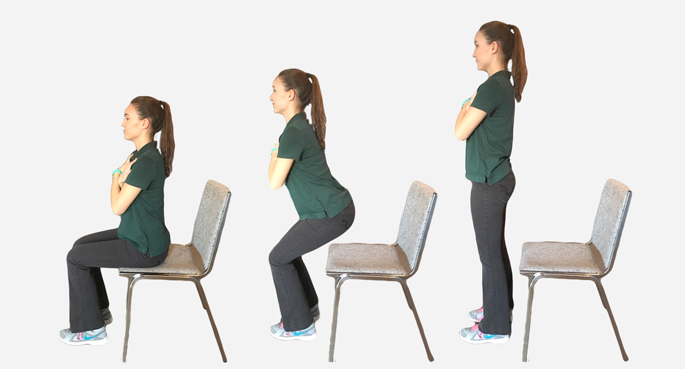
Photos courtesy of West Milford Physical Therapy Center
How to do it
Choose a chair with a solid bottom (e.g. a dining room chair) with or without arms Slide yourself near to the edge of the chair.
Adjust your posture: sit tall, chest out, with feet flat on the floor, cross your arms at chest level.
Lean forward slightly and press down through your heels to rise to a standing position.
When rising, use your hands if needed to assist with the motion. Don't let your knees touch together or to the back of the chair when rising.
From the standing position slowly lower yourself to the chair while leaning forward slightly.
Use arms only if needed, keeping body weight evenly distributed.
Jen Murphy, Jen Murphy Fitness, Milford, Pennsylvania
Plank
"My exercise to recommend would be the plank. The plank works the entire core as well as the glutes and hamstrings, arms and back. It improves posture and balance, and can be done anywhere, no equipment required."
The plank Murphy is doing in the photo is properly called a high plank and can be modified for any level, she said. There are many different variations of the plank, including elbow planks and side planks. Murphy has declared 2018 the year of the plank and is including them in most of her fitness classes. And it is easy to track progress by how long you can hold one.
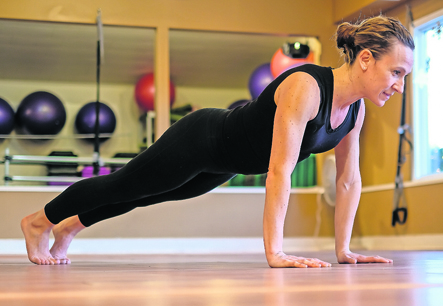
Photo: Preston Ehrler
How to do it
Begin on your hands and knees, with your wrists directly under your shoulders. Spread your fingers and press down through your forearms and hands. Gaze down between your hands, lengthening the back of your neck and drawing your abdominal muscles toward your spine. Tuck your toes and step back with your feet, bringing your body and head into one straight line.
Do not allow your hips and butt to sag too low or poke too high — it's important to keep your body in one straight line, from shoulders to heels. Keep your shoulders aligned directly over your wrists.
Shari Caruso, Snap Fitness, Vernon, West Milford and Oak Ridge, New Jersey and Warwick, New York
Push-Ups
Caruso chose the push-up as the exercise she would recommend to add to our exercise routine. "I chose the push-up because it works multiple muscles at once," said Caruso. They include the muscles in the shoulders, chest, upper arms - both front and back - and the muscles of the back. It's a powerhouse exercise to build strength, using ones own body weight.
"With push-ups, there is no set number of repetitions. You do as many as you can bang out. But form is most important."
A big benefit - you can do them anywhere.
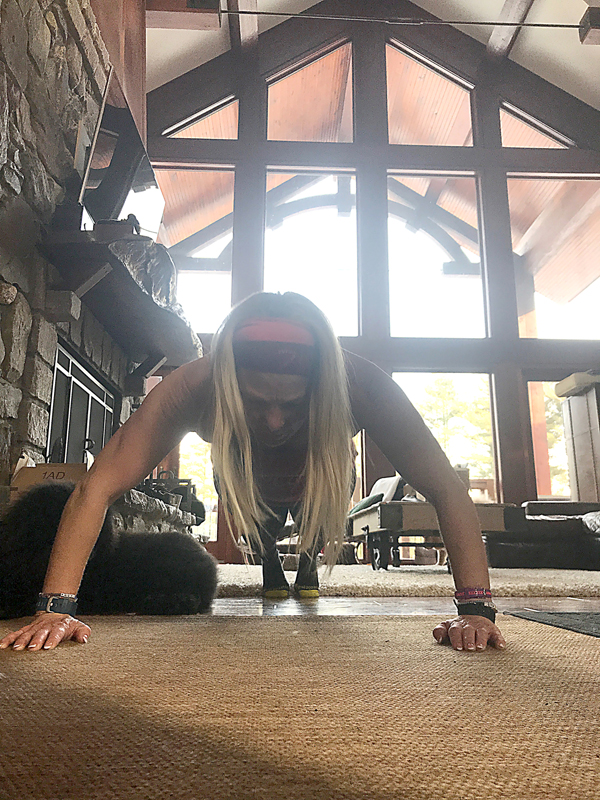
How to do it
Laying flat on the floor, put hands on the floor shoulder width apart, legs straight.
Rise up on arms and toes, butt down. Lengthen the neck. Your body is in a straight line from the head to the toes. Abdominal muscles are engaged and tight.
Lower the body down to the elbows, then raise back up.
A modified version is to keep the knees on the floor.
Rick Rutkowski, Optimum Performance Physical Therapy, Warwick, New York
Walk
"Ok, so the 'best exercise' is not as easy a topic as one would think as we need exercises in various categories to satisfy all our physiological needs of strength, motion, power, endurance, and balance. We use all these categories at some point nearly every day to transport ourselves, lift objects, work, and play.
"But, the one that has the biggest impact on our health and fitness is walking."
Rutkowski said the goal for overall fitness should be to walk for a total of 30 minutes, five or more days per week. “This can be broken down into two or three shorter sessions to reach the total.”
Becoming more fit by walking can help reduce the risk of being obese and all the related diseases that follow like heart disease, diabetes and certain cancers.
How to do it
The key to starting a walking program is to start with only 10 to 15 minutes at first and work your way up to the required amount. Newer sneakers are a must and always walk slower at first with shorter strides to help your body warm up.
If you have any issues in one leg, use a cane or walking stick on the opposite side to help balance out the forces on your body.
As each leg hits the ground, the forces that go up your leg into your spine amount to about 1.2 times your current body weight.
So start now and your body will adapt by getting stronger and more fit.
Trish Straub, Straub's Fitness, Goshen, New York
TRX Suspension Training
Straub is very much about strength, which is why she agreed that planking is something that should be added to an exercise routine. After that, she suggested TRX Suspension Training.
“I will suggest TRX Suspension Training. TRX training uses body weight and gravity to build strength, improve balance and core stability, and increase flexibility. Exercises can be performed individually or in a class setting.”
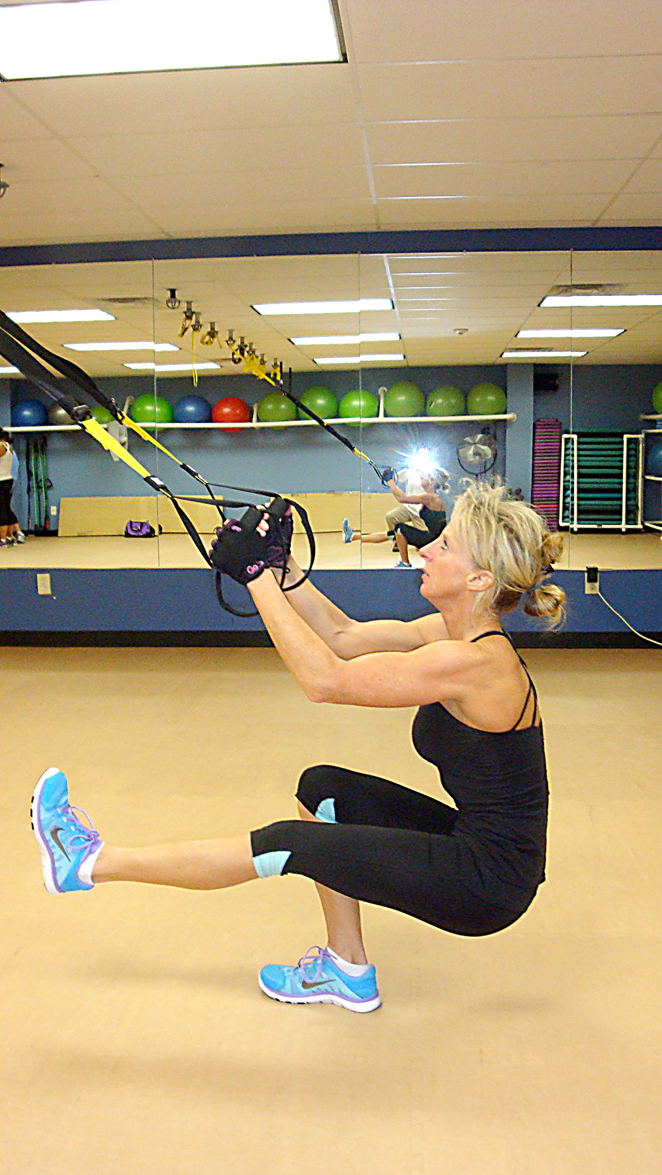
How to do it
The only equipment involved is the suspension straps themselves. Straub said “They are light weight and portable which makes them ideal for travel or home use as well as the gym.” There are videos online showing how the straps are kept in place, either by anchors, over a door, on a tree branch, etc. Hundreds of exercises are done using the system.